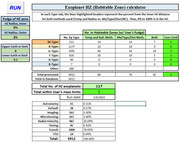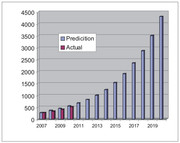Does every star have planets?
- Thread starter Admin
- Start date
You are using an out of date browser. It may not display this or other websites correctly.
You should upgrade or use an alternative browser.
You should upgrade or use an alternative browser.
Helio developed this thread showing some more details on exoplanets using Excel, https://forums.space.com/threads/exoplanet-summary.53323/#post-562890
Concerning the two exoplanet sites used in this thread, I found 3633 individual stars with exoplanets reported at the .eu site and 3659 individual stars reported for the nasa archive site. How many stars were studied that came up empty and surveyed before less than 4,000 stars can be shown with exoplanets, I do not know.
So my observation here. There are billions of stars in the MW, yet today we know < 3700 have exoplanets. The article title stated, "Does every star have planets?" My answer is no and the article is a easy to read and understand too.
Concerning the two exoplanet sites used in this thread, I found 3633 individual stars with exoplanets reported at the .eu site and 3659 individual stars reported for the nasa archive site. How many stars were studied that came up empty and surveyed before less than 4,000 stars can be shown with exoplanets, I do not know.
So my observation here. There are billions of stars in the MW, yet today we know < 3700 have exoplanets. The article title stated, "Does every star have planets?" My answer is no and the article is a easy to read and understand too.
Last edited:
The Kepler mission using the transit method , IIRC, attempted to survey 150,000 stars.How many stars were studied that came up empty and surveyed before less than 4,000 stars can be shown with exoplanets, I do not know.
The probability of finding a transit is simply D/2a. Where "D" is the diameter of the star and "a" is the semi-major axis.
For the Earth-Sun, the probability is just under 0.5%. For M-type stars with close-orbiting planets, I think it can be as high as 20%. [That would make for an interesting graph.
The no. of exoplanets by discovery method was easy to add to the program:

[Note: updated to give percentages and today's list of exoplanets.]
The article did mention that the no. of exoplanets is about equal to the no. of stars. This isn't something new, but a lot more data is needed to tweak this estimate.So my observation here. There are billions of stars in the MW, yet today we know < 3700 have exoplanets. The article title stated, "Does every star have planets?" My answer is no and the article is a easy to read and understand too.
Last edited:
Similar threads
- Replies
- 0
- Views
- 216
- Replies
- 0
- Views
- 182
- Replies
- 1
- Views
- 406
- Replies
- 0
- Views
- 134
TRENDING THREADS
-
-
Cosmic miracle!' James Webb Space Telescope discovers the earliest galaxy ever seen
- Started by Admin
- Replies: 35
-
Why does NASA's Perseverance rover keep taking pictures of this maze on Mars?
- Started by Admin
- Replies: 0
-
Hypercone Hypothesis: Rethinking Light Cones in a Hyperspherical Universe
- Started by Gibsense
- Replies: 28
-
-
Latest posts
-
-
-
-
-
-
Question What happens when we pass through Interstellar Clouds?
- Latest: Harry Costas
-

Space.com is part of Future plc, an international media group and leading digital publisher. Visit our corporate site.
© Future Publishing Limited Quay House, The Ambury, Bath BA1 1UA. All rights reserved. England and Wales company registration number 2008885.


